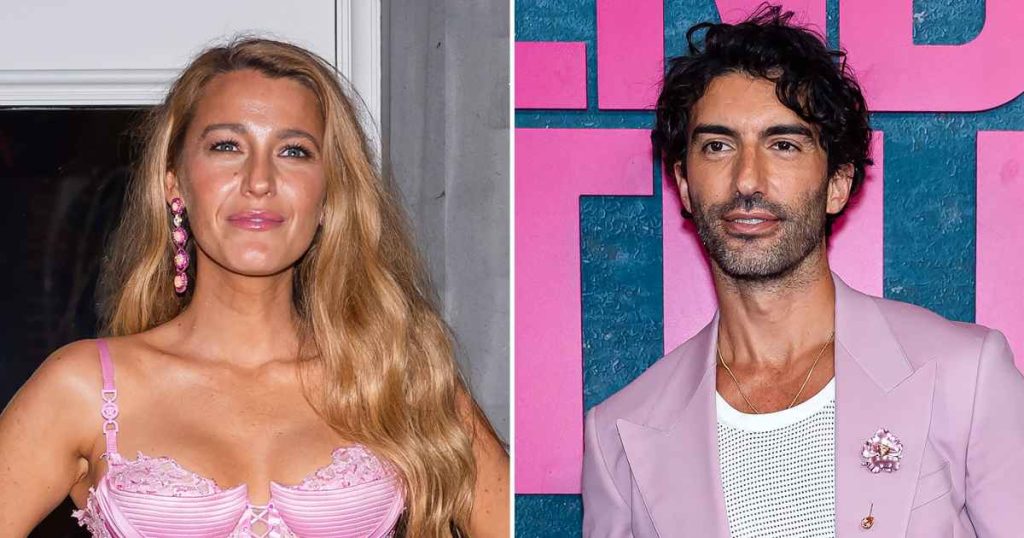Justin Baldoni’s lawsuit against The New York Times paints a picture of a bitter behind-the-scenes battle over the film “It Ends With Us,” alleging a concerted effort by Blake Lively to marginalize him and seize control of the project. Baldoni’s suit seeks a staggering $250 million in damages, citing libel, false light invasion of privacy, and other grievances. Central to his claims is the allegation that Lively systematically worked to diminish his role in the film’s marketing and even attempted to bar him from the premiere. He describes a humiliating experience where he and his team were segregated from the main cast, excluded from the after-party, and forced to organize their own separate event. This alleged ostracization extended to the red carpet, where his appearance was abruptly curtailed, and his family and friends were relegated to a basement holding area before being ushered into a separate theater after Lively’s departure. Baldoni portrays these actions as a deliberate attempt by Lively not only to steal the film but also to rob him and his team of the opportunity to celebrate their work.
The lawsuit further alleges that Lively’s husband, Ryan Reynolds, joined in the effort to undermine Baldoni. Baldoni claims that Reynolds used his influence to pressure Baldoni’s agent to drop him as a client, adding another layer to the alleged campaign to damage his career. The suit describes a climate of fear and intimidation, with Baldoni and his production company, Wayfarer Studios, feeling increasingly threatened by the perceived power and reach of Lively and Reynolds. They characterize Lively and Reynolds’ actions as a targeted attack aimed at destroying not only Baldoni’s professional standing but also his personal life. These accusations depict a deeply fractured relationship between the director and the star, suggesting a power struggle that escalated into personal animosity and alleged retaliatory actions.
Lively’s attorney has responded to Baldoni’s lawsuit with a firm rebuttal, asserting that the accusations do not invalidate Lively’s own complaints against Wayfarer and others. The statement emphasizes that Lively’s administrative complaint and subsequent federal complaint demonstrate that litigation was indeed her goal, contrary to Baldoni’s claims. The attorney encourages a thorough reading of Lively’s complaint to understand the full context of the situation and expresses confidence in addressing Wayfarer’s allegations in court. This response frames Baldoni’s lawsuit as a mischaracterization of Lively’s intentions and actions, suggesting that her legal actions are justified and not a retaliatory response to his involvement in the film.
The conflicting narratives presented by Baldoni and Lively’s legal team create a complex and contentious picture of the events surrounding “It Ends With Us.” Baldoni’s lawsuit paints him as a victim of a coordinated effort to usurp his creative control and damage his career, while Lively’s attorney frames her actions as legitimate legal pursuits based on her own grievances. The contrasting accounts raise questions about the nature of the working relationship between the director and the star, the extent of their disagreements, and the motivations behind their respective legal actions. The $250 million lawsuit against The New York Times seems to stem from Baldoni’s belief that the newspaper’s reporting has unfairly portrayed him and contributed to the damage to his reputation and career.
The details of the alleged premiere incident, as described in the lawsuit, highlight the extent of the perceived animosity between Baldoni and Lively. The alleged segregation of Baldoni and his team, their exclusion from the after-party, and the limitations placed on his red carpet appearance suggest a deliberate attempt to minimize his presence and importance at the event. Baldoni’s claim that Lively “stole the film” reflects his belief that she unfairly asserted control over the project and marginalized his contributions. The lawsuit’s portrayal of Reynolds’ alleged involvement further complicates the narrative, suggesting a broader campaign to ostracize Baldoni within the industry. These accusations paint a picture of a deeply fractured professional relationship that escalated into personal attacks and alleged attempts to sabotage careers.
The legal battle between Baldoni and Lively, with its accusations of power struggles, bullying tactics, and attempts to control the narrative, promises to be a protracted and complex affair. The conflicting accounts and the substantial damages sought by Baldoni indicate the high stakes involved and the deep-seated nature of the dispute. As the legal proceedings unfold, further details are likely to emerge, shedding light on the events surrounding the making of “It Ends With Us” and the fractured relationship between its director and star. The outcome of this legal battle will have significant implications for the reputations and careers of those involved, and it remains to be seen how the court will ultimately interpret the evidence and competing narratives.

